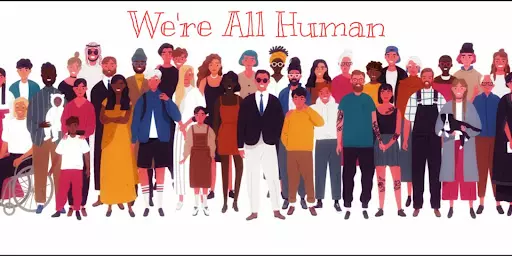
Excerpt: With globalisation and work-based migration, cultural diversity in the workplace is quite common. This article deals with what cultural diversity in the workplace is and what are the concerns that arise in a diverse work culture and what are the ways to address them. It also mentions how this phenomenon can be advantageous for a company.
Read Time: 9 mins
Miscellaneous
Social media, real-time news, and influential voices. Businesses have an obligation to address concerns about cultural differences and diversity in the workplace as technology advances, education expands, and people speak out.
Brands will be held to greater standards by employees, customers, partners, and the media. It’s vital that diversity and inclusion are ingrained in a company’s DNA from the start, rather than viewed as an afterthought.
What is cultural diversity?

The underlying beliefs that guide how individuals behave are referred to as culture. Employee habits, attitudes, traditions, or beliefs based on race, age, ethnicity, religion, or gender contribute to cultural diversity in the workplace.
One of the main drivers of workplace cultural diversity is economic globalisation. People of various genders, ages, ethnicities, faiths, and nationalities make up the modern workforce. Employers have understood that having a diverse workforce has both tangible and intangible benefits. Employers must communicate their commitment to addressing the problems of a varied workforce if they want to gain the benefits of cultural diversity in the workplace. To avoid workplace concerns like awkwardness and animosity, employers must appear to be enjoying their employees’ diversity.
Types of Diversity

Specific groups of people who have traditionally faced prejudice are referred to as “diversity in the workplace.” Many organisations have implemented diversity and inclusion programmes to help these individuals overcome workplace challenges.
When you think of diversity, it can refer to a variety of things. Here are a few examples of workplace diversity.
Caste- Caste is maybe the first thing that comes to mind when we talk about diversity in the Indian context. Employees coming from lower caste often face challenges in terms of being accepted or proper treatment by co-workers, fair compensation, hierarchy and many more
Regionality- Due to globalisation and migration, people from various states and regions come together for work. Diversity in such contrasting state cultures is often seen as a benefit to the work culture but it may also cause discrimination or tiff among the co-workers
Education- The road to employment is not the same for everyone. An organisation’s diversity of educational backgrounds is a major asset, but it can also lead to conflict.
Ethnicity- In India, due to diverse work culture, ethnic diversity is another aspect that brings in discrimination. Be it the way they look or the language they speak. Such as North-Eastern people are often discriminated against because of their Mongoloid features. Hence workplaces are coming up with safe spaces for the protection of such cases.
Generations- Yes, age is a factor in diversity. Millennials, Generation X, and Gen Z are just a few of the generations that make up a varied workforce. And each group brings to work a unique set of expectations and experiences. Millennials, for example, are known for wanting work that allows them to be flexible and aligns with their personal ideals. When Gen X first entered the workforce, that was not a priority.
Gender- Wherever you are in the world, gender equality is something the entire world thrives for. Unequal pay, thinking one gender is lower or less capable than the other or harassment cases. These are the most common things that we hear in workplaces. Hence many workplaces have come up with ICC (Internal Complaint Committee) to stop the discrimination based on gender. New workplaces have also come up with the idea of thinking beyond the binary genders.
Religion- The way your employees dress, eat, and request time off can all be influenced by their religious beliefs. Also in a country where there’s a communal tension, it may also cause conflict among the co-workers.
Sexual Orientation- The LGBTQI community is made up of many different groups, each with its own set of needs and experiences. In order to meet the needs of this group, businesses must keep this in mind when developing LGBTQI strategies. In addition, new laws are being enacted to defend these groups’ rights.
People With Disability- Workers with disabilities are included in workplace diversity. Whether it’s vision, learning, or mental health issues, diversity comes in a variety of forms. As a result, businesses must ensure that their diversity and inclusion programmes acknowledge and accommodate a wide range of disabilities.
Class- Remember that class is another factor that can cause tension in a workplace. Everyone has their own journeys, some people may go beyond their class barriers and have reached the position they are in. Hence companies should make sure that no one should get discriminated on the basis of class.
Workplace Issues Involving Cultural Diversity

Every organisation that has been a positive example of cultural diversity has had problems bringing people from different groups together to work together. These issues should be addressed by HR personnel and the company’s leadership.
The following are some workplace diversity challenges you may need to address:
- Conflict- When discrimination, prejudice, a lack of respect, casteism, and classism are allowed to grow in the workplace, this is what happens. If businesses do not take the proper steps to demonstrate that discrimination will not be accepted, intolerant attitudes might erupt into open conflict.
- Harassment- It should be clarified what constitutes harassment. Employees who harass others should face disciplinary action in accordance with corporate policies. Harassment, like all of the other difficulties that arise from workplace diversity, can be catastrophic to employees and the firm as a whole. Uber is an example of a business that has been harmed as a result of harassment allegations.
- Disregarding Needs- Some businesses disregard disabled workers’ needs by failing to provide them with the necessary equipment to access all facilities and perform their duties. Employers must take the lead in providing a welcoming environment for all employees, regardless of handicap.
Managing Diversity in the Workplace

Employers who actively seek to ensure that their companies are known for tolerance and acceptance can manage and alleviate the challenges associated with a diverse workplace.
Here are some suggestions for dealing with workplace diversity:
- Create Written Policies- Companies should make their diversity policies available in their employee handbooks. Nondiscrimination rules, the code of conduct, and the remuneration and benefits policy should all be included in the policy.
- Internal Complaint Committee (ICC)- Sexual harassment in the workplace has become commonplace in recent years. Workplace sexual harassment is a more severe type of abuse that occurs on a daily basis and robs women of their right to life and a healthy living. Hence, we need a committee in place that is completely responsible for discussing and resolving workplace sexual harassment complaints that is easily accessible to all employees. The internal Complaints Committee(ICC) is a mandatory committee that every employer is required to constitute within his organisation. In absence of ICC, a company can be penalised.
- Provide Sensitivity Training- To improve the workplace culture, employees should be given sensitivity training. Sensitivity training may help employees value other points of view, recognise offensive words and acts, and know what to do if they’ve been offended.
- Create an Accountability Plan- Check in on your progress with regular surveys, and make a plan for how you’ll verify that your employees follow the policies.
- Address Micr-Aggression- Thinly disguised, everyday manifestations of casteism, homophobia, sexism (and more) that you witness in the world are microaggressions. Commenting on how effectively a North-easterner speaks Hindi or complimenting a Dalit coworker on their appearance are two examples. To combat these micro-aggressions, use training.
- Impose a Zero-Tolerance Policy- Following the distribution of the handbook and training on diversity problems, the organisation must establish the tone for how breaches will be handled. Employees should be informed that inappropriate behaviour will not be tolerated and that any incident reported will be investigated thoroughly.
Benefits of Cultural Diversity
When answering the question “why is cultural diversity important in the workplace?” It’s vital to consider the advantages that both the firm and employees can get.
The advantages of cultural diversity are:
- Leadership- Workplace diversity can have a significant impact on your leadership. Your leadership is the face and voice of your organisation, from establishing company culture to recruiting different individuals during recruitment.
- Innovation- When everyone in a corporation comes from the same background, they are more likely to have similar ideas. Companies require new ideas and concepts in order to remain competitive. A varied workforce gives fresh ideas on how to solve challenges and innovate to obtain a competitive advantage.
- Respect- Because of the positive contribution that different people provide, a diverse workforce allows team members to recognise one other’s individuality. When coworkers are willing to learn from one another, they recognise that diversity helps them work as a team more effectively. As a result, develop mutual respect for your diverse colleagues.
- Reputation- A company’s dedication to diversity shows that it embraces fairness and equality. These attributes improve the company’s reputation among suppliers and customers. Customer loyalty and a good reputation will be gained by a company that openly recruits the best individuals for a job, regardless of whatever group they belong to.
- Productivity- A company’s diversity is a good indicator of how productive its personnel will be. Forbes Global Diversity and Inclusion in the Workplace Promotes Innovation According to a research by the Diverse Workforce Institute, 77 percent of employers use productivity as a metric to assess the performance of diversity programmes. According to respondents in the Forbes survey, having a diverse workforce has increased productivity at their companies.
- Growth- When a company has a diverse workforce, it is better positioned to form relationships with people from many cultures. Employees from a variety of backgrounds can advise businesses on the best ways to expand their consumer bases. Employees that are able to communicate in a variety of languages and are familiar with the cultural norms of worldwide markets can be critical to a company’s success.
- Recruitment- When it comes to attracting the greatest talent, diversity is crucial. Job seekers understand the significance of a varied workforce and want to work for a firm that recognises and values their differences.
- Compliance- Companies must follow both federal and state regulations against discriminatory activities. Promoting a diverse workplace where everyone is respected assists businesses in complying with the law while also ensuring that each employee is treated with the respect they deserve.
Why Diversity is Important In The Workplace

It’s impossible to overestimate the value of cultural variety in the workplace. Having a diversified workforce improves the bottom line while also helping to stay on the right side of the law. Companies with a clear diversity and inclusion policy (and are seen to enforce it) have happier and more productive staff as well as a positive reputation.
The allotment of leave is a critical area where organisations that employ hourly workers must demonstrate fair treatment. Schedule a call with HR to see how they leave function may help you keep track of your employees’ time off and ensure they get the vacation time they deserve.










